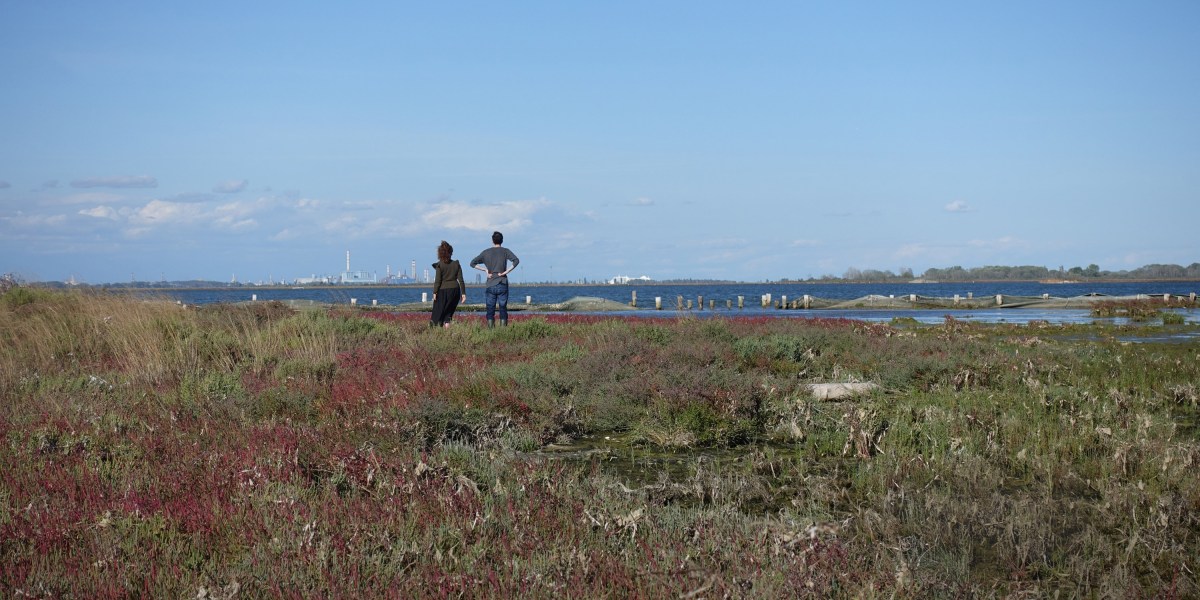
One of the sites the We Are Here Venice team is working is on a natural salt marsh, hugged on one side by a kidney-shaped platform of infill dredged from the lagoon. In places where the mud is dry, the ground has separated into patches that conjure small tectonic plates, littered with bone-white crab claws picked clean and dropped by gulls flying overhead. Three orange sticks mark the spot where a fence between the salt marsh and the infill will be removed to allow water exchange and the movement of sediment, making the two ecosystems “speak to one another,” as Jane da Mosto, the executive director and cofounder of WAHV, describes it.
Tramping over the island in rubber boots, releasing gobbets of black mud at every step, da Mosto explains that “all of this represents a kind of natural capital.” Not only do the marshes store carbon, but “these environments also support fish habitats and a huge bird population,” she adds. Even the samphire, an edible marshland plant, “could be cultivated like a crop.” Marshes are also more efficient carbon sinks than forests, because marshland plants that store carbon are gradually buried under sediment as the tide washes over them, trapping the carbon for as long as centuries.
Da Mosto sees the city as something of a laboratory for environmental solutions with wider applications. “Venice is a mirror on the world,” she says. “If the city remains an example of all the world’s problems, as it is now, then there’s no point trying to keep it alive. But we should be able to show how to turn infills into ecologically productive salt marshes and how to transform an economy based on mass tourism into an economy based on its natural capital.”
Catherine Bennett is a freelance journalist based in Paris.
